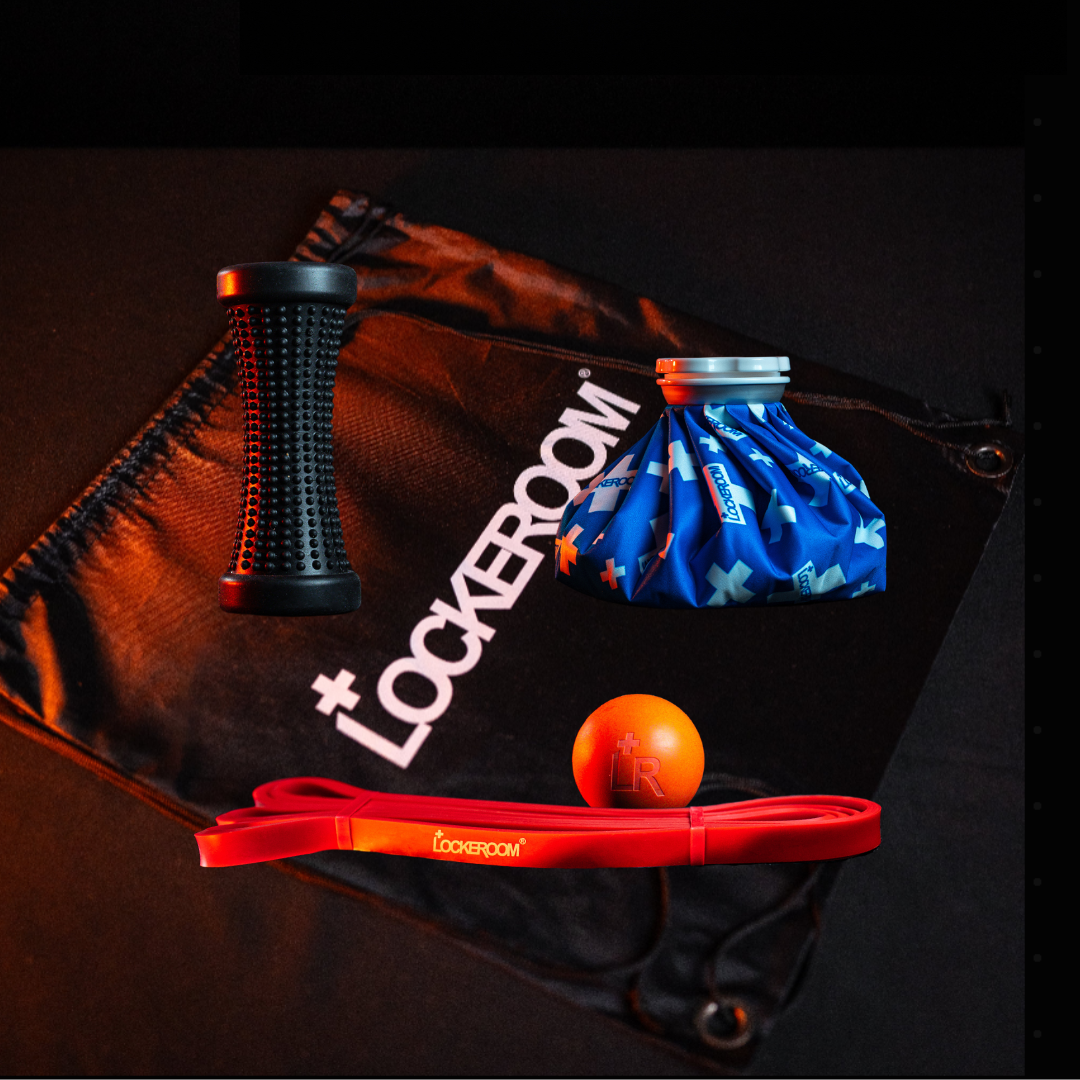
Q&A with Cam
Learn what might be behind your symptoms
What's the most common ankle injury you see?
The most common ankle injury is a lateral ligament sprain.
Grade 1 and 2 lateral or medial ankle sprains, involve damage to the ligaments that help stabilise the joint and prevent excessive movement. A sprain occurs when these ligaments are stretched beyond their normal range of motion, often due to a twist or roll of the ankle.
Most sprained ankles involve injuries to the ligaments on the outer side of the ankle (lateral) and may also include muscle or tendon tears at the time of injury.
Apply ice and compression, using an Icemate, as soon as possible following injury to manage pain and minimize swelling.
Lower-grade sprains are typically managed conservatively, starting with non-weight-bearing using crutches until the pain eases. These sprains may require immobilization with a walking boot that reduces pain and offers support to allow continued weight-bearing, sometimes with crutches for additional support.
Once the swelling has gone, what do I need to do when I sprain my ankle?
Symptoms of minor ankle sprains may include persistent pain, swelling, and instability in the ankle. Treatment involves managing the injury conservatively and gradually incorporating a rehabilitation program.This should be done within pain tolerances to avoid exacerbating the injury.
A comprehensive approach to treatment, including strengthening exercises and gradual progression of activity, is essential for effective recovery and preventing future injuries.
Focus on maintaining and building muscle strength in the Peroneals, Tibialis Anterior, Tibialis posterior, Calf and Foot intrinsics with a Power Band. Strengthening these muscles supports the ankle and improves overall stability. Proprioceptive( Balance) exercises are a key component to rehab.
Improving or maintaining foot mobility with a Massage Ball can also aid in reducing discomfort and enhancing recovery.
What other significant injuries occur in the ankle and how do you treat them?
More Traumatic injuries in the ankle can include fractures of the tibia and/or fibula, high ankle sprains (syndesmosis), and higher-grade lateral or medial ankle sprains. Tibia and fibula fractures can often occur from a twist or roll movement, typically during or due to heavy contact collisions, jumps, awkward landings, or even stepping off a gutter.
These fractures happen quickly, leaving little time for the body to protect itself, and treatment may involve either operative or nonoperative protocols, depending on the type of fracture.
High ankle sprains, which commonly occur during sports, cause pain above the ankle joint, either at the front outside or, in severe cases, both the front and back of the ankle.
These injuries can range from complete ruptures to high-grade sprains, with occasionally surgery needed based on severity. Lateral and medial ankle sprains, which are also high-grade, may require surgery and are often seen in collision sports, netball, or incidents involving hard landings.
The best course of action for any of these injuries includes applying ice with an ICEMATE to manage pain, seeking immediate medical diagnosis, and using a boot with non-weight bearing (NWB) precautions if weight-bearing is particularly painful.
What's a Syndesmosis or 'High Ankle' Sprain'?
This injury, often occurring in running or jumping athletes, involves damage to the ligaments at the front of the ankle.
It may range from low to high-grade syndesmosis sprain to a complete rupture, with pain primarily at the front and lateral side of the ankle and for higher grades includes the posterior ligament and interosseous membrane. Symptoms include severe pain and swelling/ with bruising and an inability to weight-bear.
Treatment will involve immobilization in a boot, non-weight-bearing with crutches, and often surgery for high grade injuries. Medical review, including X-rays or MRI, is essential to determine the extent of the injury.
What does a typical ankle rehab program following surgery involve?
When injured, it's important to address strength, stability, and mobility to ensure a full recovery.
Acute injury rehabilitation, including recovery following surgery, focuses on several key strategies to manage pain, reduce swelling, and restore function.
Initial treatment involves applying ice and compression with an Icemate, as well as elevating the affected area to relieve pain and control swelling with compression. Within pain tolerances, it is important to maintain muscle strength in the peroneals, tibialis posterior, tibialis anterior, calf muscles, and foot intrinsics. Additionally, regaining joint range of motion (ROM) is crucial, particularly if dorsiflexion is limited.
For more advanced recovery, incorporate lateral and multi-directional stability exercises using balance boards, Aqua Ball to re-educate more complex movement patterns and improve overall stability.
How long before I'm back playing sport?
Return to play expectations for ankle injuries vary based on the type and severity of the injury.
For a tibia or fibula fracture, recovery typically spans 6-9 months, depending on the nature of the fracture and the success of the rehabilitation process.
After syndesmosis surgery repair, such as a Tight Rope procedure, athletes can expect a return to play in approximately 16 weeks, provided that they follow a structured rehabilitation program.
High-grade lateral or medial ankle sprains generally require 8-12 weeks of recovery before returning to full activity.
Each injury demands a careful and progressive approach to rehabilitation, ensuring the ankle is fully stable, strong, and mobile before resuming sport-specific activities.














